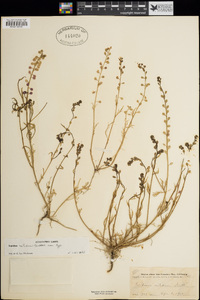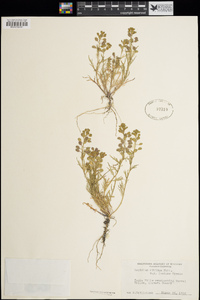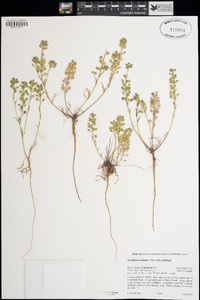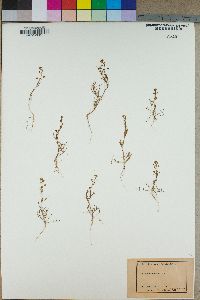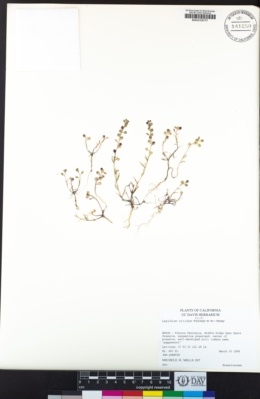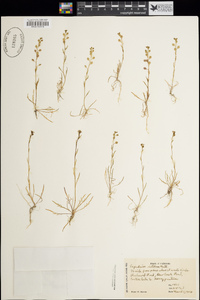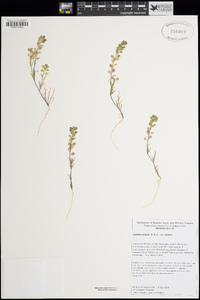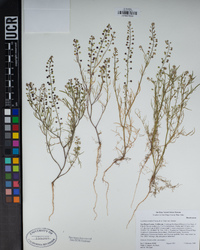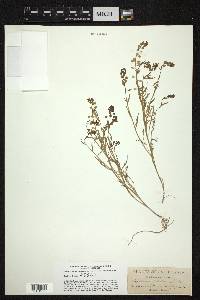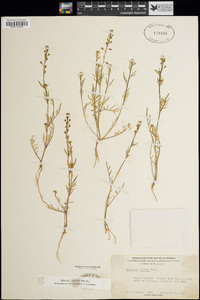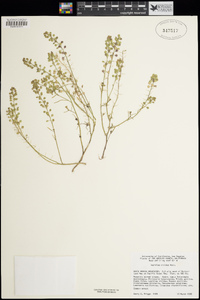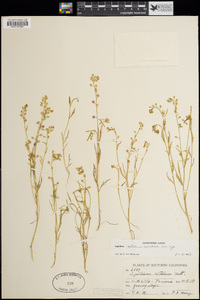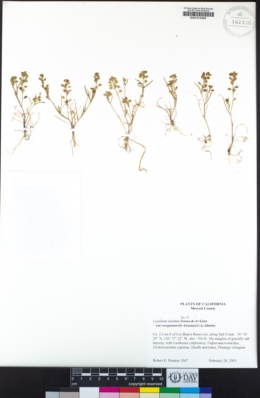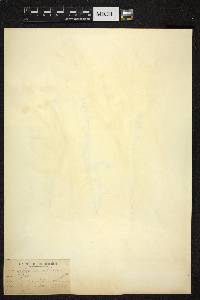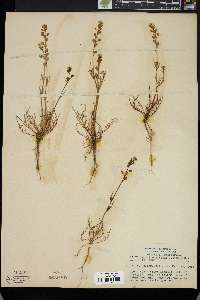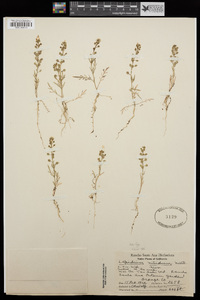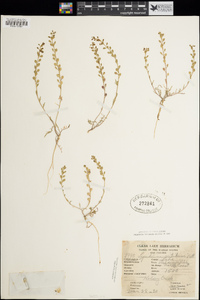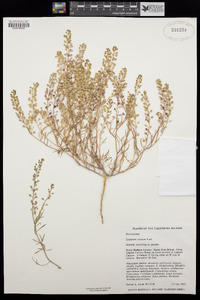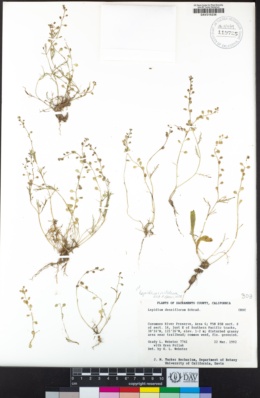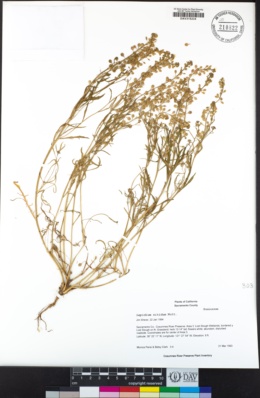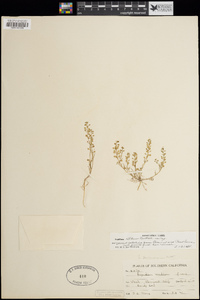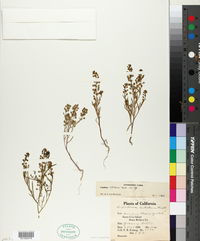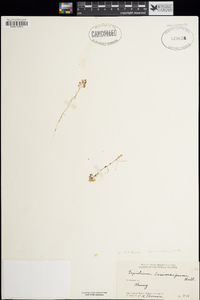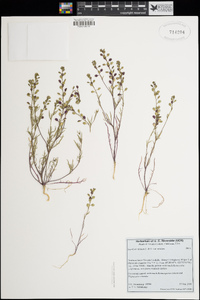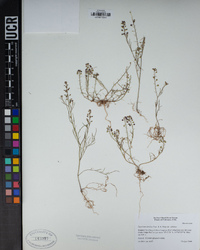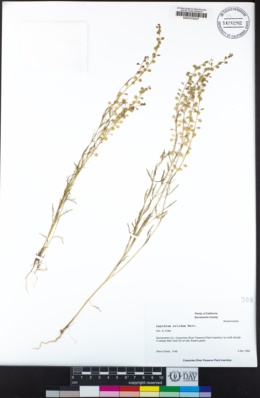Lepidium nitidum
|
|
|
|
Family: Brassicaceae
Shining Pepperwort
[Lepidium chilense Kunze ex Walp., moreLepidium leiocarpum Hook. & Arn.] |
Annuals; puberulent. Stems simple to numerous from base, erect to ascending or decumbent, sometimes branched distally, (0.4-)1-3.5(-4.2) dm. Basal leaves (soon withered); not rosulate; petiole (0.4-)1-4.2(-5) cm; blade pinnatisect (lobes usually linear to filiform, rarely oblong to lanceolate), (0.8-)1.5-7.3(-8) cm, margins (of lobes) usually entire, rarely dentate. Cauline leaves petiolate or subsessile; similar to basal, blade smaller, sometimes undivided and linear, base attenuate, not auriculate. Racemes much-elongated, (lax) in fruit; rachis puberulent to hirsutulous, trichomes straight, cylindrical. Fruiting pedicels usually divaricate, rarely ascending or suberect, usually slightly or weakly recurved, rarely straight, (strongly flattened), 2.5-5(-6.5) × (0.4-)0.6-0.9 (-1.1) mm, puberulent adaxially and sometimes on proximal 1/3 abaxially. Flowers: sepals oblong-ovate, (0.7-)0.9-1.3(-1.5) × 0.5-0.8 mm; petals (rarely rudimentary or absent), white, oblanceolate, (0.8-)1.2-2 (-2.8) × 0.2-1(-1.6) mm, claw absent, (glabrous); stamens usually 4, median, rarely 6; filaments (0.5-)0.7-1 (-1.3); anthers 0.1-0.2 mm. Fruits orbicular to broadly ovate, (2.5-)3-5.5(-6.5) × (2-)2.6-5(-5.4) mm, apically winged, apical notch 0.3-0.7(-1) mm deep; valves thin, smooth, slightly veined or not, usually glabrous, rarely minutely and sparsely puberulent (along margin); style usually obsolete, rarely to 0.1 mm, included in apical notch. Seeds ovate-oblong, 1.6-2.6 × 0.9-1.2 mm. Flowering Feb-Mar. Alkaline flats and sinks, meadows, pastures, dry vernal pools, fields, sandy beaches, grassy area, gravelly slopes, creosote bush desert; 0-1000 m; Calif., Oreg., Wash.; Mexico (Baja California). C. L. Hitchcock (1936) and R. C. Rollins (1993) recognized three varieties within Lepidium nitidum, of which var. howellii was said to differ from var. nitidum by having puberulent (versus glabrous) fruit margins and stems densely (versus glabrous or sparsely to densely) pubescent. These characters do not covary, and some glabrate plants have puberulent fruit margins, whereas some very densely pubescent plants have glabrous fruits. As for var. oreganum, it is based on plants with divergent fruit wings, but this feature shows every degree of transition from divergent to non-divergent, and both those authors accepted in var. nitidum forms with slightly divergent fruit wings. The species is highly variable in leaf division, fruit size and shape, indumentum density, and flower morphology, especially in the number of stamens and presence or absence of petals. We prefer to maintain it without any further splitting. C. L. Hitchcock (1945b) indicated that Lepidium nitidum occurs also in Chile but did not indicate whether the plant is introduced or native there. The material that he annotated and cited as L. nitidum from Chile clearly represents misidentified L. chilense Kunze ex Walpers. The latter always has two stamens, whereas L. nitidum usually has four, rarely six, and Hitchcock´s report of two stamens in the latter species was likely based on misidentified plants of another species.
|








